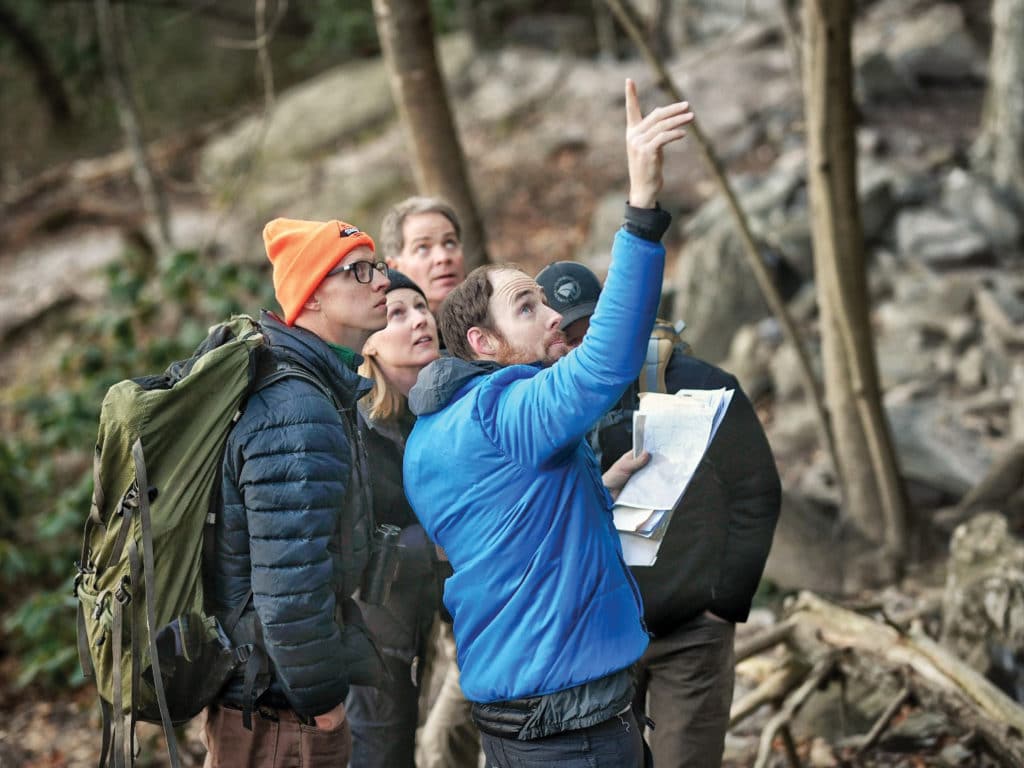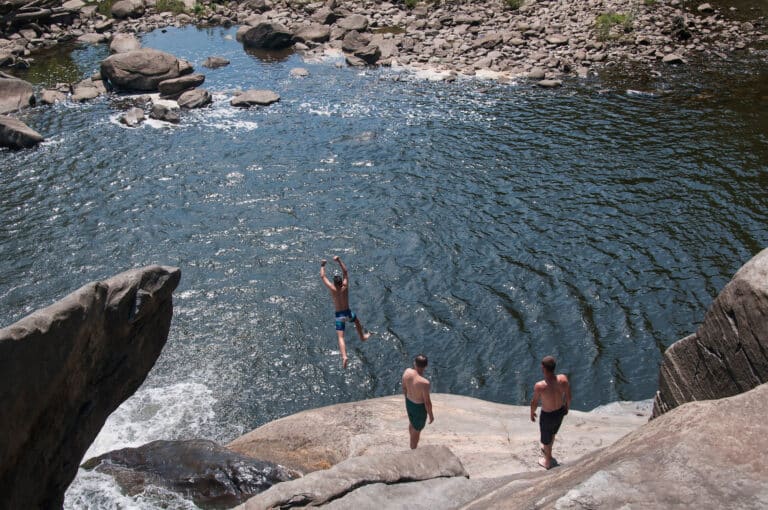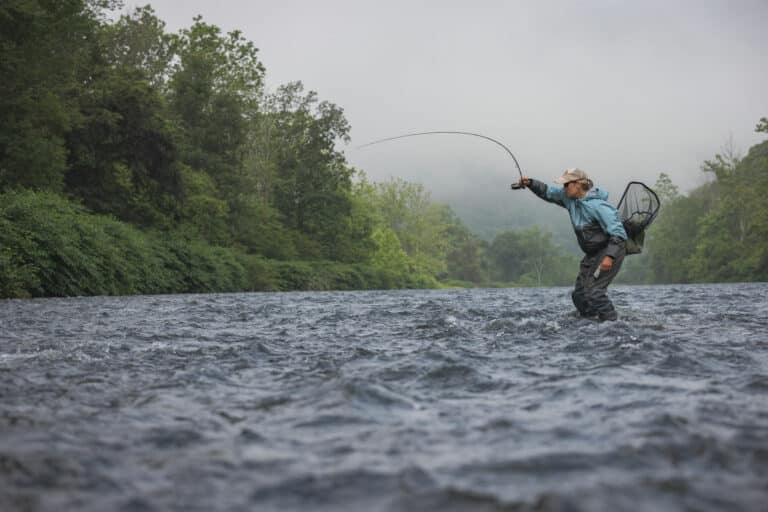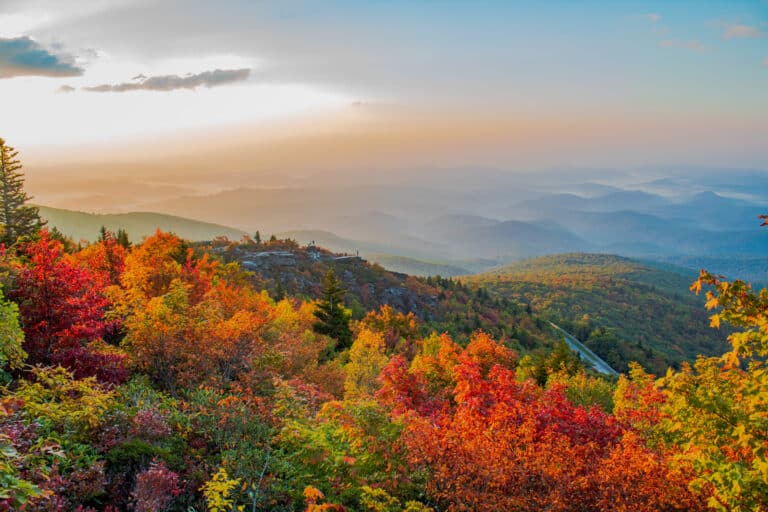Biologists and Rock Climbers Team Up to Protect Peregrine Falcons
Rope? Check. Carabiners? Check. Helmet? Check. Epic rock face? Check. Endangered species nesting on my route? Wait a second…
Western North Carolina boasts some of the best rock climbing in the Southeast, but we aren’t the only creatures that use the revered cliffs. Peregrine falcons, the fastest animal on the planet, capable of diving up to 200 miles per hour, rely on steep cliffs and high rock faces to nest each spring.
While most peregrines breed farther north or out west, western North Carolina hosts a small population of breeding falcons that nest on some of the most popular climbing hotspots in the region. The intersection between conservation and recreation on these rocks has led to collaboration between the North Carolina Wildlife Resource Commission (NCWRC) and the Carolina Climbers Coalition (CCC), who work together to promote conservation, stewardship, and responsible recreation to protect this sensitive species.
Peregrine falcon populations took a nose dive in the second half of the 20th century, largely from the use of pesticides like DDT, up until the 1970s. Despite recovering nationally and being removed from the federal endangered species list in 1999, peregrine falcons are still considered endangered in North Carolina due to their small population.
“Peregrines are extremely territorial, so one rock face can only host one breeding pair each year,” says Chris Kelly, an avian biologist with NCWRC, who has been studying the peregrine falcon population in western North Carolina for 15 years. In a review conducted by NCWRC of peregrine falcon nesting results for the 13 years following federal delisting, it was clear that, despite a healthy population of mating pairs, western North Carolina had a problem with nest success.
“There could be a variety of causes for this, from predation to competition to a cold rainy spring to disturbance to inexperienced birds to disease or pests,” says Kelly. “Of those, we really can only influence human disturbance and maybe protect nests from the elements. That brought a new focus to our work and we needed the insights of the CCC.”
Mike Reardon, president of the CCC, was excited to foster a partnership. “CCC and NCWRC have communicated about peregrine closures for decades.
The recent uptick in this relationship has been the on-the-ground collaboration between us,” Reardon says.
This work has taken place at some of the most popular cliffs in North Carolina. At Moore’s Wall in Hanging Rock State Park, “through an unprecedented collaboration, NCWRC trained several volunteer climbers to monitor the north end of Moore’s. The nesting site there was unknown over the past few years. After many monitoring sessions, biologists and trained volunteers confirmed that there was not a nesting site and could therefore be open.”

In Linville Gorge, an eastern mecca for climbing, the CCC help monitor and assess potential and existing nest sites. After determining that a pair of adult falcons were attempting to nest near Apricot Buttress, “the NC Wall closure was expanded to include Apricot and The Camel features to give the nesting pair a slightly larger buffer during breeding,” Reardon explains. Also in the gorge, “the peregrines that breed on Short Off moved their nest to a different part of the cliff. We worked with NCWRC to confirm that the new nesting location did not affect climbing areas and therefore the old closure zone, which did affect climbing areas, was lifted.”
The CCC’s conservation efforts are a big part of what they do as an organization. This includes educating their members. “We have had events surrounding conservation, educational flyers about peregrines, [and] climbing guidebooks that focus on conservation elements of climbing,” Reardon explains. “We try to instill a strong LNT (Leave No Trace) ethic in all climbers.”
In western North Carolina climbers face a unique set of opportunities and challenges when it comes to getting out on a rock face. “Although we are blessed with many climbing areas, each one is unique and our ‘climbing season’ is temperamental here in N.C.,” says Reardon. Even though the additional route closures, sometimes up to six months, for peregrines, can be frustrating for eager climbers, Reardon believes that as outdoors enthusiasts, most climbers understand the importance of conservation. Kelly agrees, and says, “No one likes to be told that an area is closed and they can’t climb, but most of the climbers who contact me seem excited to report a peregrine sighting. They often express awe and thank us for the work we’re doing.”
“As climbers, we share those spaces with other species that are not necessarily used to human interaction,” Reardon adds. “When performed thoughtfully, human interaction does not have to be harmful to those species. Peregrines, and the closure system we have in place, is a great example of that.”
Cover Photo: Two peregrine nestlings perched on a cliff, just days away from their first flight. Photo by Chris Kelly








